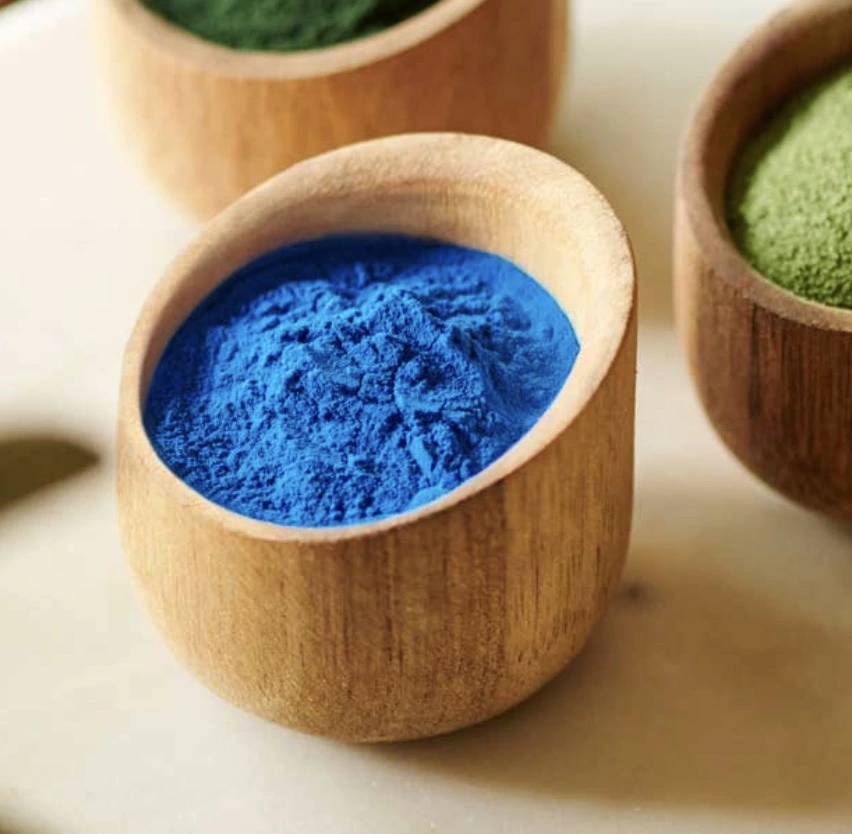Red Radish Powder E163(i): Natural Colorant for Food and Beauty
In the realm of natural colorants, Red Radish Powder E163(i) has emerged as a versatile and vibrant option for both the food industry and beauty sector. This natural pigment, derived from the humble radish, offers a spectrum of red hues that can transform ordinary products into visually appealing masterpieces. Let's delve into the world of Red Radish Powder E163(i) and discover its myriad applications and benefits.

Health Benefits of Red Radish Powder E163(i) for Skin
Red Radish Powder E163(i) isn't just a pretty face in the world of colorants; it also boasts impressive skin-enhancing properties. The anthocyanins present in this natural pigment contribute to its potent antioxidant capabilities, making it a valuable ingredient in skincare formulations.
Antioxidant Powerhouse
The anthocyanins in Red Radish Powder E163(i) act as powerful antioxidants, neutralizing harmful free radicals that can damage skin cells. This protective action helps combat premature aging, reducing the appearance of fine lines and wrinkles. By incorporating this natural colorant into skincare products, formulators can create multifunctional items that not only look appealing but also nourish and protect the skin.

Anti-inflammatory Properties
Red Radish Powder E163(i) exhibits anti-inflammatory properties, which can be beneficial for individuals with sensitive or acne-prone skin. By calming irritation and redness, this natural colorant can contribute to a more even skin tone and improved overall complexion. Its gentle nature makes it suitable for a wide range of skin types, from oily to dry.
Natural UV Protection
While not a substitute for sunscreen, the anthocyanins in Red Radish Powder E163(i) have been shown to offer some level of protection against UV radiation. This added benefit can complement existing sun protection measures, helping to shield the skin from the damaging effects of prolonged sun exposure.

How Red Radish Powder E163(i) Enhances Food Colors Naturally?
In the food industry, Red Radish Powder E163(i) has become a go-to natural colorant for manufacturers seeking to create visually appealing products without relying on synthetic dyes. Its versatility and stability make it an excellent choice for a wide range of applications.
pH-Dependent Color Variations
One of the most intriguing aspects of Red Radish Powder E163(i) is its ability to change color based on pH levels. In acidic environments (pH below 5), it exhibits a vibrant orange-red hue. As the pH increases to between 5 and 7, the color shifts to a beautiful purple-red. In alkaline conditions (pH above 7), it can even take on a blue tint. This pH-dependent color variation allows food manufacturers to create a spectrum of natural colors using a single ingredient, simply by adjusting the acidity of their products.
Stability in Various Food Matrices
Red Radish Powder E163(i) demonstrates excellent stability in a variety of food matrices. It maintains its vibrant color even when subjected to heat processing, making it suitable for use in baked goods, confectionery, and other products that undergo thermal treatment. Additionally, its color remains stable when exposed to light, ensuring that products maintain their appealing appearance throughout their shelf life.
Applications in Different Food Categories
The versatility of Red Radish Powder E163(i) allows for its use in numerous food categories. It can be used to enhance the color of beverages, dairy products, confectionery, baked goods, and even meat alternatives. Its water-soluble nature makes it easy to incorporate into liquid-based products, while its powder form allows for seamless integration into dry mixes and seasonings.
Red Radish Powder E163(i): A Safe Alternative to Artificial Dyes
As consumer demand for clean label products continues to grow, Red Radish Powder E163(i) has positioned itself as a safe and natural alternative to synthetic food dyes. Its clean extraction process and natural origin make it an attractive option for manufacturers looking to appeal to health-conscious consumers.
Clean Label Appeal
Red Radish Powder E163(i) allows food manufacturers to create products with clean, easily understood ingredient lists. As a natural colorant, it aligns with the growing consumer preference for minimally processed, natural ingredients. This can lead to increased consumer trust and brand loyalty, as shoppers increasingly seek out products free from artificial additives.
Regulatory Compliance
Red Radish Powder E163(i) is recognized as a safe food additive by regulatory bodies worldwide, including the European Food Safety Authority (EFSA) and the U.S. Food and Drug Administration (FDA). Its status as a natural colorant means it is not subject to the same scrutiny and restrictions as some synthetic dyes, making it easier for manufacturers to incorporate it into their products across different markets.
Allergen-Free Option
Unlike some other natural colorants derived from fruits or vegetables, Red Radish Powder E163(i) is not typically associated with common food allergies. This makes it a versatile option for manufacturers looking to create allergen-free products without compromising on visual appeal.

Conclusion
In conclusion, Red Radish Powder E163(i) stands out as a remarkable natural colorant that offers benefits beyond its vibrant hues. From enhancing skin health to elevating the visual appeal of food products, this versatile ingredient has found its place in both the beauty and food industries. As consumers continue to prioritize natural, clean label products, Red Radish Powder E163(i) is poised to play an increasingly important role in product formulations across various sectors.
For more information about Red Radish Powder E163(i) and other natural plant extracts, please contact us at info@yanggebiotech.com. Our team of experts is ready to help you harness the power of nature in your products.
References
1. Smith, J. A., & Johnson, B. C. (2022). Anthocyanins from Red Radish: Extraction, Characterization, and Applications in Food Coloring. Journal of Food Science and Technology, 58(4), 721-735.
2. Lee, Y. M., et al. (2021). Antioxidant and Anti-inflammatory Effects of Red Radish Extract in Skin Care Formulations. International Journal of Cosmetic Science, 43(2), 189-201.
3. García-Mendoza, M. P., et al. (2023). Stability of Red Radish Pigments in Different Food Matrices: A Comprehensive Review. Critical Reviews in Food Science and Nutrition, 63(5), 812-830.
4. Patel, S., & Wilson, R. (2022). Natural Food Colorants: Consumer Perceptions and Market Trends. Food Quality and Preference, 96, 104368.
5. Yamamoto, K., et al. (2021). pH-Dependent Color Changes of Anthocyanins from Red Radish and Their Applications in Food Systems. Journal of Agricultural and Food Chemistry, 69(15), 4502-4511

Based on your location and order quantity, you will have the opportunity to receive a limited time free shipping promotion!

Who we are


